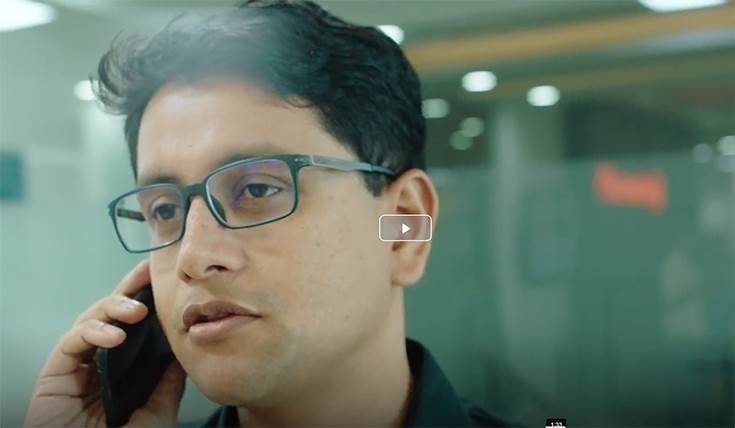German Tier-1 major Continental, which is playing a key role in vehicle safety in India by supplying several components such as ABS for two- and four-wheelers, as well as airbag control units, and ESC systems for passenger vehicles, is now eyeing the Indian two-wheeler industry to introduce its ARAS solutions.
The company plans to roll out its radar-based advanced rider assistance systems or ARAS solutions, starting with motorcycles and scooters pre-equipped with anti-lock braking or ABS systems in India. According to Dr Anshu Gupta, director, Continental, Germany, “We have an ARAS solution already in production globally for the last three years, and we are now trying to bring it to the Indian market. However, we are still assessing which category within the two-wheeler segment to target.”
Dr Gupta explained that since ARAS technology is witnessing continuous evolution, the company will evaluate which new or existing vehicle architectures, including both ICE and EV models, will be best suited for its advanced safety offerings. “We have very positive discussions going on with two of the biggest two-wheeler OEMs in India,” Dr Gupta revealed.
While Continental did not disclose any concrete information around the expected SOP timelines of the technology in India, as per Dr Gupta, “The discussions are ongoing, and regarding when we would want to launch the product, depends on when we have our first customer. We are hopeful that we can conclude the discussions by another year. But the idea is to make it very quick.” Dr Anshu Gupta: “We have an ARAS solution already in production globally for the last three years, and we are now trying to bring it to the Indian market.”
Dr Anshu Gupta: “We have an ARAS solution already in production globally for the last three years, and we are now trying to bring it to the Indian market.”
 ARAS as a real-world safety guide: The Emergency Brake Assist shortens response time and supports riders by means of carefully measured braking intervention in the event of impending rear-end collisions.
ARAS as a real-world safety guide: The Emergency Brake Assist shortens response time and supports riders by means of carefully measured braking intervention in the event of impending rear-end collisions.
Focus on 125cc and above two-wheelers
Since it is focusing on two-wheelers that come equipped with ABS, Continental could be targeting motorcycles and scooters belonging to the 125cc-and-above category, which in India, mandatorily requires an ABS solution for enhanced vehicle safety. The company has developed a cost-effective 4D imaging radar sensor that enables rider-assist functions such as blind-spot detection, lane-change assist, and adaptive cruise control, among other safety functions such as rear-end collision warning.
While Continental, in 2019, had already given a glimpse of its sharp focus on cost with the single-channel ABS modules that are today being implemented in some popular entry-level motorcycles between 125cc and 200cc segments in India, the company says it is open for partnerships for sustainable roll out of its ARAS solutions.
“What we would also like to do is partner someone who has been in the market for a long time, and knows the Indian market deeply. We want to ensure that we launch our product strongly, and in a stable manner in India,” he added.
Like most of its other solutions on offer, the Tier-1 major is also aiming to localise these advanced safety technologies in the country, and says volumes will play a crucial role in determining its roadmap. “It is about economies of scale, and once we see volumes, like any other Tier-1 player, we would invest in localising the product in India. The only possible roadblock, therefore, is the volume,” Dr Gupta said.
Cost-effective 4D radar sensor
Continental’s latest 4D imaging radar sensor is also suitable for activating Level-2+ and Level-3 autonomous driving capabilities, as well as advanced driver assistance systems or ADAS features in modern-day cars by offering a cost-effective sensing solution that can take replace cameras and Lidar sensors typically also used for enabling functionalities such as adaptive cruise control, and lane-keep assist. Under Level 3 autonomy, a vehicle can drive completely autonomously under a certain set of conditions.

The company expects demand for its latest imaging radar solutions to come from emerging markets such as those in Asia. “We anticipate demand from emerging markets in Asia, and India, wherein the vehicles, equipped with a smart radar sensor, would be able to deliver basic Level-2+ capabilities,” Dr Gupta said.
“On top of that, with the emerging trend of SDVs or software-defined vehicles, vehicles will have distributed zonal architectures, wherein our satellite radars (placed around the vehicle) as well as imaging radars will play a key role in offering consistent Level-2+ and Level-3 functionalities,” he added.
The company says it is well placed to offer solutions for ADAS and SDVs, and considers itself to be at the right juncture, with the right technology, the right talent pool, and the right footprint to ensure it can capitalise on this emerging market trend – going from for highly autonomous to semi-autonomous driving. “While this is a global outlook, we are equally excited for the Indian market. Here, we see a trend not only for four-wheelers, but also for two-wheelers which form the largest motorised segment on Indian roads. As Continental, we are committed to ensure that we do our best to make Indian roads safer, both for two-wheelers, as well as for passenger vehicles,” Dr Gupta signed off.
